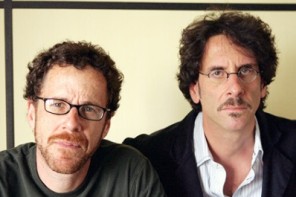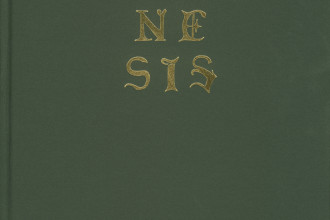Director Thom Stark has described his award-winning short film, Who Art in Heaven as simply a man praying. Indeed, it is no more than that. A man walks into a church repeatedly, sits in a pew, goes to the altar, stands away from the cross, or goes back out the door, praying the Our Father.
On the whole, when you first hear the concept you may be tempted to roll your eyes. It sounds like an indie production of little value, gimmicky and perhaps an attempt at high art with little nuance. But Stark has achieved a stunning and heartbreaking exploration of faith without ever changing the dialogue, simply using the most famous prayer in Christianity.
The result is a stunning achievement. Running a little over twenty minutes, the film journeys from unquestioned devotion to the valley of despair and up out into some new middling ground, a space of certain uncertainty.
What is interesting about the theological rawness of the film is Stark’s background. He is the author of The Human Faces of God: What Scripture Reveals When It Gets God Wrong (and Why Inerrancy Tries To Hide It); was a Fig Tree and Ledbetter scholar at Emmanuel School of Religion; and has lectured on Second Temple Jewish apocalyptic, Christian origins, the Parables of Jesus, and early Christological controversies.
Yet in Who Art in Heaven, Stark is stepping away from more academic discourses on faith and historical Christianity and instead inviting an audience to encounter the life of faith played out in a very short amount of time but with dramatic consequences. A Christian audience can identify with the different emotional deliveries of the Our Father on the screen, so much so that the film is arguably the most honest exploration of faith yet to be committed to the medium.
For instance, for all the theological poignancy of a film such as Tree of Life, it nonetheless binds itself to a specific plot structure that a viewer can only identify with to a particular point. It is a narrative interpretation of the chosen and the unchosen, a plot we have a theological sense of engagement with but perhaps not always a physical one. A theological engagement is abstract to us, it engages our intellectual sense of faith and belief but it perhaps does not have immediate analogy to our own experiences. A physical engagement, however, provides an immediate analogy to things we have experienced, which contain theological poignancy but begin in a very literal sense of memory and experience.
Who Art in Heaven is the common narrative of the Christian prayer life, using only the words of the most common and recognisable prayer. We don’t know what has happened or is happening to cause each rendition to be delivered as it is, but we are able to fill in the unknown with our own experiences. The look of pain becomes the pain we recall having walked through ourselves in another time, another place, perhaps even now. The apathy is our own. The joy is our own. We see ourselves quickly in the face of the man praying and we see ourselves at prayer in the different seasons we have found ourselves turning over the same words.
Ultimately, Stark has created a film that serves as an exploration of spiritual memoir told from a universalising perspective, one that is perhaps best watched, sat with, reflected upon, and then years later spoken of.
—
Preston Yancey is earning his MLitt in Theology, Imagination, and the Arts from the University of St. Andrews and has accepted a place in the PhD programme for the autumn. He is the author of the popular seePrestonblog and his first book, A Common Faith: A Memoir of God Found, Lost, and Found Again is being written now.





I did like it. I liked its honesty and its simplicity; its lucidity.
What I disliked the most: the music. The emotion of the music did too much “talking”… I would have liked to see it without music. Starker, perhaps, but also truer to our soundtrackless lives.
I see your point, Marilyn. The music does influence a lot. It’d be curious to see this performed, perhaps, on stage without an audio track … I’m just thinking of the varying ways this premise could be uniquely adapted.
This is a very thought provoking film and very well done. Even though the dialogue is minimal, in combination with the man’s actions, his attire, camera angles and the “mood music” it has much to say. I find it ironic and exemplary of the man’s troubles that he continues entering an empty building (not the church, but a structure they meet in) and tries to communicate with God without God’s word, the Bible, open in front of him. To me it says he is willing to acknowledge the existence of God without recognizing the variety of ways in which God can respond to the man’s apparently one-sided conversation. He talks, but the only response he will accept is the direct voice of God … maybe. Hopefully he will find other ways of hearing God’s voice before he hears it in a way that is terrifying.
That’s an interesting interpretation, Ty. The film is of course designed to elicit the viewer’s own experiences, but I guess it never occurred to me that some viewers would see the subject as an object of critique. I’m not sure that seeing only seven solitary prayers is meant to indicate that the man doesn’t read the Bible, pray with the Bible, or worship with the community. The character seems pretty devout to me. Piety of course includes solitary prayer, a lot of which takes place in places of worship like this one, this location being a small chapel, a place to escape the noise and commune with God. I’m not sure I see the irony that you see at any rate. But your response does say something about your own experiences, so I guess it works in that regard.